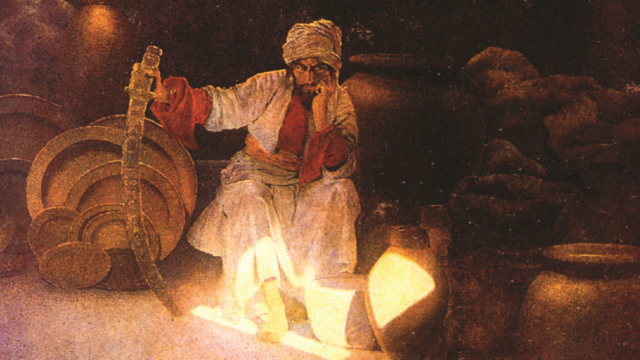-
QUALIFICATIONS
- For Linguists Worldwide
- For UK Public Services
- Preparation
- Policies & Regulation
-
MEMBERSHIP
- Join CIOL
- Professional Membership
- Affiliate Membership
- Chartered Linguist
- Already a member?
- Professional conduct
- Business & Corporate Partners
-
LANGUAGE ASSESSMENTS
- English
- All Other Languages
-
CPD & EVENTS
- Webinars & Events
- CIOL Conferences
- Networks
- CIOL Mentoring
-
NEWS & VOICES
- News & Voices
- CIOL eNews
- CIOL Awards
- The Linguist Magazine
- Jobs & Ads
-
RESOURCES
- For Translators & Interpreters
- For Universities & Students
- Standards & Norms
- CIOL & AI
- All Party Parliamentary Group
- In the UK
- UK Public Services
- Find-a-Linguist
When subtitles go wrong
By Jessica Oppedisano
 With the success of on-demand platforms such as Netflix and Amazon Prime, audiovisual translation (AVT) is gaining more and more visibility. Big companies that plan to release their shows on a global scale have to pay attention to the quality of the translations and to the working conditions of their translators. However, translating for these big platforms covers only a portion of the AVT market.
With the success of on-demand platforms such as Netflix and Amazon Prime, audiovisual translation (AVT) is gaining more and more visibility. Big companies that plan to release their shows on a global scale have to pay attention to the quality of the translations and to the working conditions of their translators. However, translating for these big platforms covers only a portion of the AVT market.
That market is different today than it was just a few years ago, thanks largely to online streaming. The simultaneous release of a show in different languages and regions requires a well-organised structure that includes the work of translators from the beginning of the process, and this is obtainable only with an adequate budget.
In an ideal world, audiovisual translators in both subtitling and dubbing would receive a script in the source language accompanied by reference material, the video footage, time codes and the ‘bible’, which includes details such as the plots of previous seasons, relevant events that might be referred to in future episodes, and terminology.
It is best if the same translator works on an entire show, as this guarantees consistency and limits the time spent researching the bible. Once a translation is sent off, it should ideally be reviewed by several departments before a final version is approved. No mistakes should pass through these multiple checks, especially when dealing with big productions.
So how does the reality of the situation compare? Things clearly do not always go according to plan and mistakes can be glaring. A Spanish subtitle for a Game of Thrones character with a Geordie accent went viral because the translator failed to detect the sentence as English, rendering it phonetically instead: ‘She can’t see us’ became ‘Sicansíos’. This is not an isolated case. In Ghost Wars, for instance, a word-for-word translation led to this nonsensical exchange in the Italian subtitles:
A: Via, via!
B: Che sta dicendo?
C: Credo dica: Ron, Ron
B: Chi è Ron?
From the English:
A: Run, run!
B: What is he saying?
C: It sounds like: Ron, Ron
B: Who is Ron?
Though we may never know how these mistranslations reached the screen, we can gain an understanding of gaps in the system that may lead to such errors.
High competition, low rates
Translation for dubbing is mainly carried out in the country of the target language. Practices vary from country to country, and working conditions can be far from ideal. I tried to gain an insight into the situation for those working into Italian and discovered a varied landscape. In Italy, competition for work is high and an increasing number of studios are fighting to get a share of the market by offering low prices to potential clients. As a consequence, AV translators are receiving lower rates, and are increasingly drawn towards accepting more assignments and rushing through them.
This is especially true for those who have limited experience. “Although it is hard to make a living working for these agencies, we need to gain the experience before we can offer our services to the good ones and compete with well-established colleagues on the same level,” said one newcomer, who wished to remain anonymous and will be referred to as Sarah.
Fansubbing (i.e. subtitles made by fans, free of charge) can drive down fees for professional subtitlers, but for freelancers working on big productions, this is not usually a concern. These companies rely on qualified translators to get subtitles ready for release simultaneously in all the languages they cover.
A bigger problem for many Italian AV translators is the working conditions. They report that they regularly receive scripts for translation that differ from the video footage. Sometimes parts of the script are missing or the time codes are wrong, so the material on which the translator is working is not as broadcast. When this happens, they rely on the footage they have been given as a reference to fill in the missing parts.
Morris Lugato, from the studio Erazero based in Milan, explains that it is common for time codes on the scripts to be different from the video: “Time codes (the numbers indicating the minute and photogram in the video) might refer to a different video format. Or maybe the script is not updated after the video is edited,” he says. “It is a minor issue for me, because I could not work relying on the script alone; I check my translation against the video all the time to make sure my text corresponds to the picture.”
In Italy, working conditions are regulated by Collective Agreements (Contratto Collettivo Nazionale del Lavoro; CCNL) negotiated by representatives of the workers’ national unions and of the confederations of employers for each industry. CCNLs define the general guidelines of employment in terms of salary, minimum leave entitlement and legal obligations. There might be additional agreements between the parties regarding specific issues, but these are not binding, so companies adhere to them on a voluntary basis.
According to these voluntary agreements, time-consuming tasks, such as filling in the missing parts of an incomplete script, should be paid as an extra. Some studios do adequately compensate translators for this work, or give it to technicians to work on, allowing the translators to continue with their actual job. However, the common practice in Italy is to extend the deadline for delivery (to give the translator time to carry out this additional work) without increasing the translator’s fee. “In my experience, not many agencies pay for the extras,” says Sarah. “There are good agencies out there and when we find them, we stick to them, because we know our time is valued and we can spend more time working on the project to deliver a high-quality service.”
In subtitling, too, the quality of a translation can be affected by several factors: out-dated scripts; inexperienced translators; fast turnaround, leaving little time for the review process; and low rates, which force the translator to work quickly to finish the task and start another. In some cases, translators do not have the context or video to refer to.
Subtitles for the Italian market are almost always translated by freelancers, usually working through agencies or, less often, directly for the end client. As subtitlers are not necessarily based in the country of their target language, working conditions vary a great deal depending on where the commissioning studios are based. The subtitlers I interviewed live in the UK, France, Italy and elsewhere.
Ideally, the same translator would work on all episodes of a show, but this appears to be rare, with agencies often dividing the workload among several translators, making consistency difficult and mistakes harder to spot. Giovanni, whose name has been changed, started his career working with agencies but now works with direct clients.
“I had never worked on a whole show before starting my collaboration with the studios directly. I guess it is how agencies work: they accept big projects and divide them among several translators to guarantee a faster turnaround,” he explains.
Industrial action
In the past few months, several industrial actions have been carried out by two of the major unions – CGIL (the Italian General Confederation of Labour) and CISL (the Italian Confederation of Trade Unions) – to urge a wider acceptance of the agreements. The actions name and shame dubbing studios that have not accepted the most up-to-date agreements, or that have failed to implement them, encouraging professional translators to refuse to work with them until they comply.
This action is mainly confined to Rome, where the majority of studios that work on films are based. I was told that the studios in Italy are unofficially divided into three main areas: in Milan, most of the studios work on advertising; Rome is the main area for the film industry; and Bologna covers gaming and the remaining market segments. I found 90 studios in Italy through an online search and reached out to 40 of them; only two agreed to talk to me, neither of them based in Rome or involved in the industrial action.
Although Morris’s studio is not involved in the action, he is aware of the situation. “It is hard, especially for translators at the beginning of their career, but I encourage them to work on topics they are passionate about,” he advises. “This will make it easier for them to establish their reputation as experts, delivering high-quality translations, and to make a name for themselves in the industry.”
Revealing rumours?
The overall picture of the AVT industry in Italy appears fragmented. I have heard rumours that AV translators are afraid that if they protest they will be unable to secure work in future. These concerns are compounded by a belief that the studios in Rome are connected, making it easy for translators to be singled out and blacklisted. It has not been possible to determine the veracity of these claims, but it is clear that many AV translators are worried.
It is worth noting that most of the people I approached did not want to be interviewed, and that, of the three people who did agree to interview, two asked for anonymity to avoid jeopardising their collaborations with the studios that do apply best practice. Although examples of good practice do exist, an atmosphere of fear seems to point to real problems in the Italian AVT industry. How much this impacts the subtitles we see on screen, however, remains unknown.
Filter by category
More
The Chartered Institute of Linguists (CIOL), Incorporated by Royal Charter, Registered in England and Wales Number RC 000808 and the IoL Educational Trust (IoLET), trading as CIOL Qualifications, Company limited by Guarantee, Registered in England and Wales Number 04297497 and Registered Charity Number 1090263. CIOL is a not-for-profit organisation.








